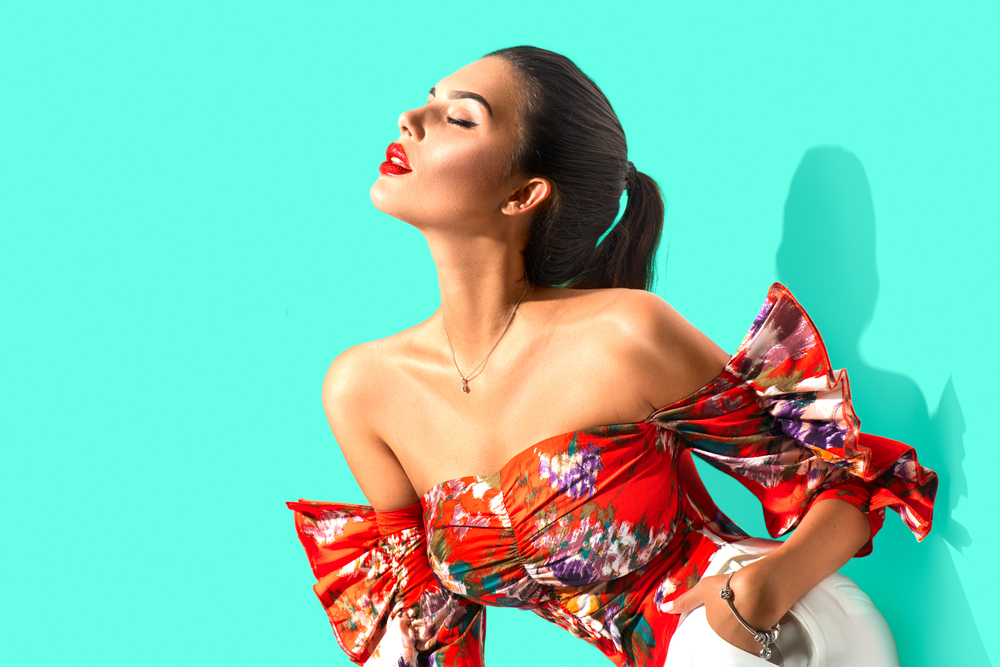
The Art of Modeling: Mastering the Perfect Pose in Photoshoots

In the world of fashion and photography, modeling (or modelling) is an art form that requires skill, technique, and a keen eye for detail. Every successful model knows that mastering the perfect pose is crucial for creating stunning photographs. Whether you're an aspiring model or a photographer looking to capture the essence of beauty and elegance, understanding the art of posing is essential.
Posing is not just about looking pretty or standing in front of a camera; it's about creating a mood, conveying emotions, and telling a story through your body language. When done right, posing can elevate a photograph from average to extraordinary. So, how can modeling you master the perfect pose in photoshoots? Let's explore some key elements that can help you hone your posing skills.
1. Body Awareness - Understanding your body and its unique attributes is the foundation for successful posing. Models should take the time to learn their body's strengths and weaknesses. By knowing which angles, positions, and poses work best, you can accentuate your positive features and camouflage any perceived flaws. Practice in front of a mirror to become aware of your body's lines, curves, and expressions.
2. Posture and Stance - Good posture goes a long way in creating a visually appealing pose. Stand tall, lengthen your spine, and straighten your shoulders for a more confident and elongated silhouette. Experiment modelling with different stances, such as the classic S-curve or the powerful T-pose, to find the one that emphasizes your body's unique shape and adds interest to the composition.
3. Expression and Eye Contact - The eyes are often referred to as the windows to the soul. In modeling (by models) , they play a crucial role in conveying emotions and engaging with the viewer. Practice expressing a range of emotions through your eyes, from seductive and mysterious to joyful and playful. Maintaining eye contact with the camera or the photographer can create a strong connection, capturing the attention of the audience and adding depth to your photos.
4. Fluid Movements - A static pose can sometimes appear stiff and unnatural. To bring life and dynamism to your shots, incorporate fluid movements into your posing repertoire. Experiment with gentle twists, turns, and gestures. Allow your body to flow and create shapes to add grace and elegance to your photographs. Remember to maintain control over your movements rather than letting them appear random or chaotic.
5. Posing in Relation to the Environment - Models often find themselves shooting in various locations, each with its own unique ambiance. To make the most of the surroundings, consider incorporating elements from the environment into your poses. For example, if you're shooting on a beach, incorporate the movement of the waves or feel the sand between your toes. By harmonizing your pose with the surroundings, you can create a visually cohesive and captivating image.
6. Confidence and Comfort - Confidence is key to successful posing. A model who feels comfortable in their own skin exudes an aura of self-assuredness that translates into the photographs. Work on building your confidence by practicing in front of the camera, experimenting with different poses, and embracing your uniqueness. Remember, confidence comes from within, and it can transform a good pose into a great one.
Frequently Asked Questions:
Q1. How do I find my best angles for posing?A1. Experimenting in front of a mirror and working with experienced photographers can help you discover your most flattering angles. Additionally, studying successful models and understanding their signature poses can provide inspiration.
Q2. How can I overcome feeling nervous in front of the camera?
A2. Nervousness is natural but can be overcome with practice. Start by practicing poses in a comfortable environment, gradually increasing your exposure to the camera. Working with a supportive photographer who can guide you through the process can also help ease nerves.
Q3. What should I do if I don't like a certain part of my body?
A3. Instead of focusing on what you perceive as flaws, focus on your body's positive aspects. Experiment with poses that emphasize your strengths and help create visual symmetry. Remember, there is beauty in diversity, and celebrating your uniqueness is essential.
Q4. How can I convey different emotions through my poses?
A4. Practicing in front of a mirror can help you explore various facial expressions and body language associated with different emotions. Experiment with subtle changes in posture, gaze, and hand positions to convey the desired mood.
Q5. How can I ensure my poses are cohesive with the photographer's vision?
A5. Communication is crucial. Before the shoot, discuss the concept, mood, and expectations with the photographer. This will allow you to align your poses with their vision, ensuring a more collaborative and successful outcome.
In the world of modeling, the perfect pose is a combination of technical skill, self-awareness, and creativity. By incorporating these elements into your posing repertoire, you can elevate your modelling (or modeling) career and create visually stunning photographs. Remember, practice makes perfect, and with dedication, you can master the art of posing and captivate audiences with your every move.
Other useful resources
- https://blog.planetmodelphoto.com/models/modeling/
- https://en.wikipedia.org/wiki/Category:Modeling_(profession)
- https://blog.planetmodelphoto.com